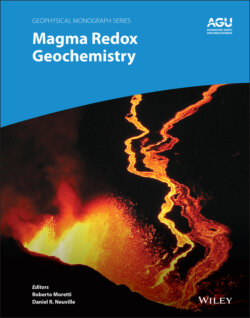Читать книгу Magma Redox Geochemistry - Группа авторов - Страница 40
3.1.3. Trace‐Element Oxybarometry
ОглавлениеIn addition to iron, the periodic table offers us a wealth of elements that undergo valence state changes in response to changes in fO2. The theory that underpins trace element oxybarometry is that fO2‐driven valence state changes will result in changes to mineral‐melt partition coefficients. Thus, the concentration of a multivalent trace element in melt should reflect the residual mineralogy, the melt composition, and the pressure, temperature, and oxygen fugacity of the system during melting. In this way, the power of redox‐sensitive minor and trace element partitioning can be harnessed to monitor the fO2 of geologically relevant lithologies, and can offer advantages over Fe. Trace element concentrations offer advantages because they are (i) relatively straightforward to measure and (ii) should be less susceptible than formal valence state to modification after the melt separates from the residue. A wide range of redox‐sensitive elements (e.g., Ti, V, Cr, Ce, Eu, U, Mo, W, Re) are discussed separately by Mallmann et al. (2021) within this volume, and we refer the interested reader to that chapter. Several trace elements, however, have been employed to infer the fO2 of basalt source rocks (the mantle) as a function of tectonic setting (e.g., Bali et al., 2012; Bucholz & Kelemen, 2019; Canil, 1997; Laubier et al., 2014; Lee et al., 2005; Lee et al., 2010; Lee et al., 2012; Mallmann & O’Neill, 2009; Mallmann & O'Neill, 2013; Shervais, 1982). A review of all of these studies and proxies is beyond the scope of this chapter; however, we will discuss vanadium (V) – the most widely applied of these proxies. Vanadium valence can be V2+, V3+, V4+, or V5+ in geologically relevant systems. The incompatibility of V3+ in mantle minerals is similar to many other trivalent elements, such as the rare earth elements, Sc, Y, and Ga, while V4+ and V5+ are more highly incompatible. Therefore, with all other parameters equal, melting peridotite at higher fO2 should result in systematically higher melt V concentrations relative to other trivalent trace elements (Canil, 1997; Lee et al., 2003, 2005).
